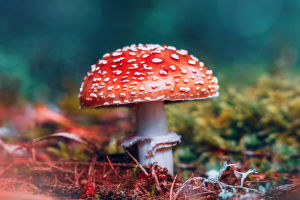Nature's Beauty and Value
The lotus is a perennial aquatic plant that grows in freshwater habitats. It is widely distributed across Asia, Australia, and North America. Its beautiful flowers and rich medicinal value have made it revered in various cultures.
The growth habits of the lotus are unique, making it well-suited to thrive in warm, sunny, and clean freshwater lakes, ponds, or marshlands.
1. Rhizome and Leaves
The lotus's rhizome, known as "lotus root," grows in the soil. It has a cylindrical shape with several holes inside, and its unique air channels, help the lotus breathe in the mud.
The lotus leaves are round and large, and have a smooth surface with a special hydrophobic property, causing water droplets to roll off without wetting the leaf. The leaves effectively perform photosynthesis, providing the energy needed for growth.
2. Flowers
The lotus flowers are large and beautiful, typically measuring 10 to 20 centimeters in diameter.
The flowers consist of multiple layers of petals, with colors ranging from white and pink to deep red, and they emit a faint fragrance. The blooming period of lotus flowers generally lasts from June to September, showcasing a brilliant display on the water's surface.
3. Fruits and Seeds
The fruit of the lotus is called a "lotus pod," which contains several seeds known as "lotus seeds."
These seeds are oval-shaped, with a hard outer shell, and are rich in starch and protein, making them an important food and medicinal resource. Lotus seeds have an exceptionally long lifespan, capable of surviving for hundreds of years, and can maintain their germination ability even in harsh environments.
The lotus plays a significant role in the ecosystem. Firstly, its root system can stabilize the muddy bottom, reducing water turbidity and improving water quality. Additionally, the lotus leaves provide shade for the water surface, reducing evaporation and helping maintain the moisture balance in wetlands. The flowers, leaves, and stems of the lotus can also provide habitat and breeding grounds for aquatic organisms, contributing to a rich biodiversity.
Every part of the lotus plant can be used medicinally, with each part having its unique therapeutic effects. Lotus seeds strengthen the spleen, stop diarrhea, and calm the mind, making them suitable for symptoms like insomnia and palpitations. The lotus root stops bleeding and is often used to treat conditions like coughing up blood. Lotus leaves have a cooling effect and are commonly used to relieve summer heat and aid in weight loss.
The lotus holds an important place not only in traditional medicine but also in modern medical research, which has confirmed its various pharmacological effects, such as antioxidant, anti-inflammatory, and anti-tumor properties.
The lotus also has high economic value. Lotus seeds and roots are commonly found on dining tables across Asian countries. In places like Vietnam and Japan, lotus seeds are widely used in making desserts, porridge, and other delicacies. Lotus root, with its unique flavor, can be used in soups, stir-fries, or as a cold dish. The petals of the lotus can also be used to make tea, which has a pleasant fragrance.
Additionally, the lotus is an important plant in landscaping. It is often used to enhance the beauty of ponds and lakes in garden design, with its vibrant flowers and lush leaves adding a lively touch to the environment. In recent years, derivative products such as lotus pollen and essential oils have gained market popularity, further enhancing the economic value of the lotus.
By gaining a deeper understanding of the lotus, we can not only better appreciate its beauty but also make full use of its various benefits in our lives. The presence of the lotus allows us to experience the wonders of nature and the strength of life, inspiring us to face life's challenges with a more positive attitude.


